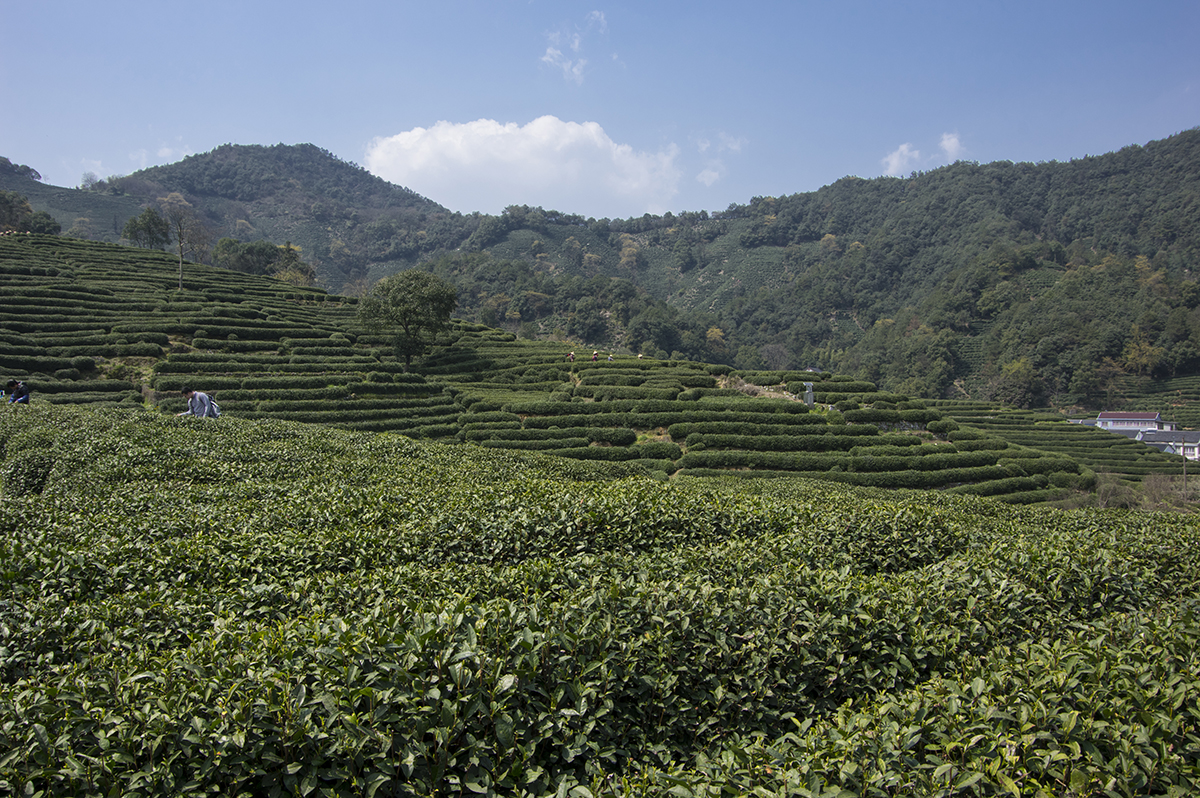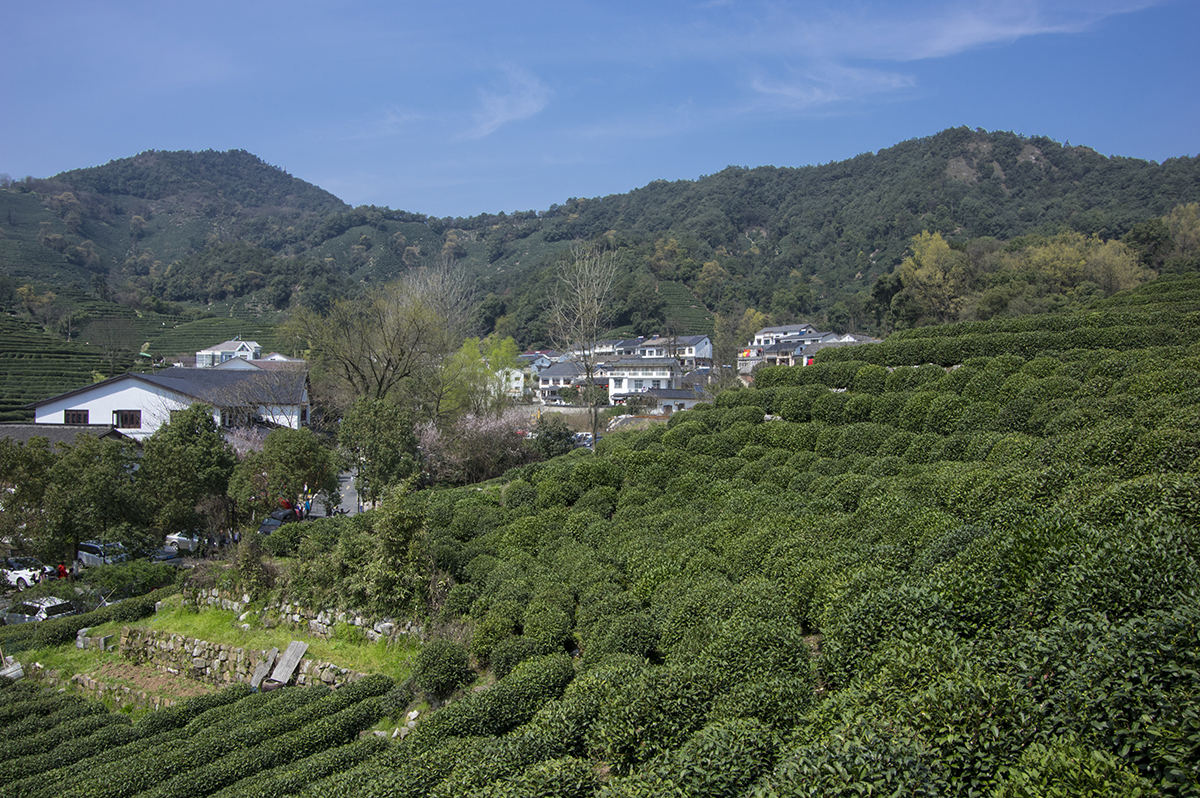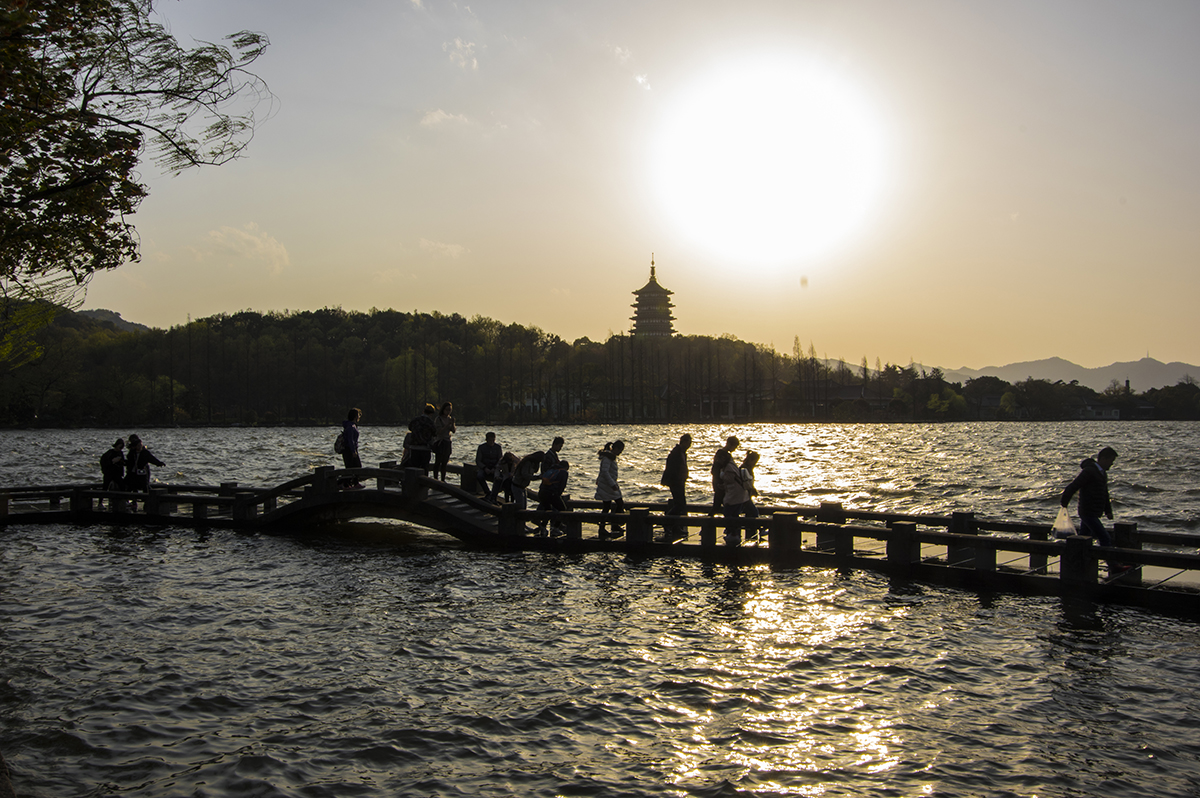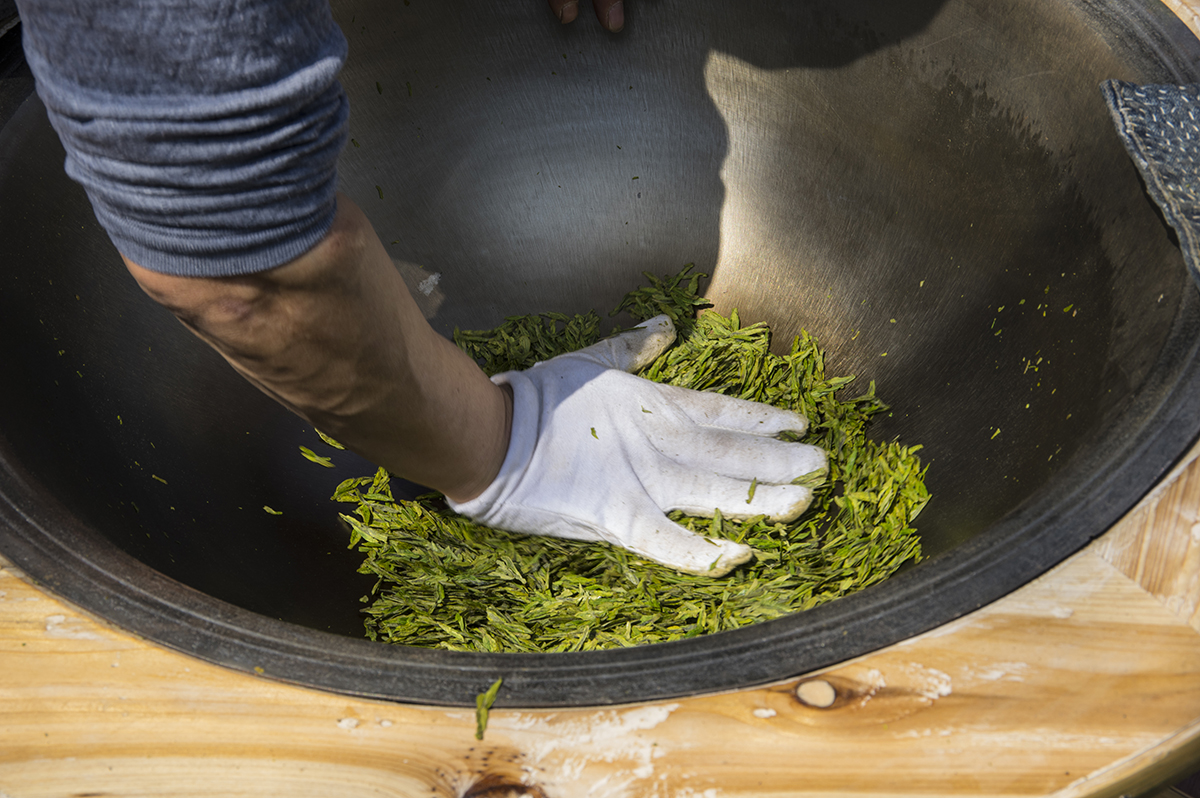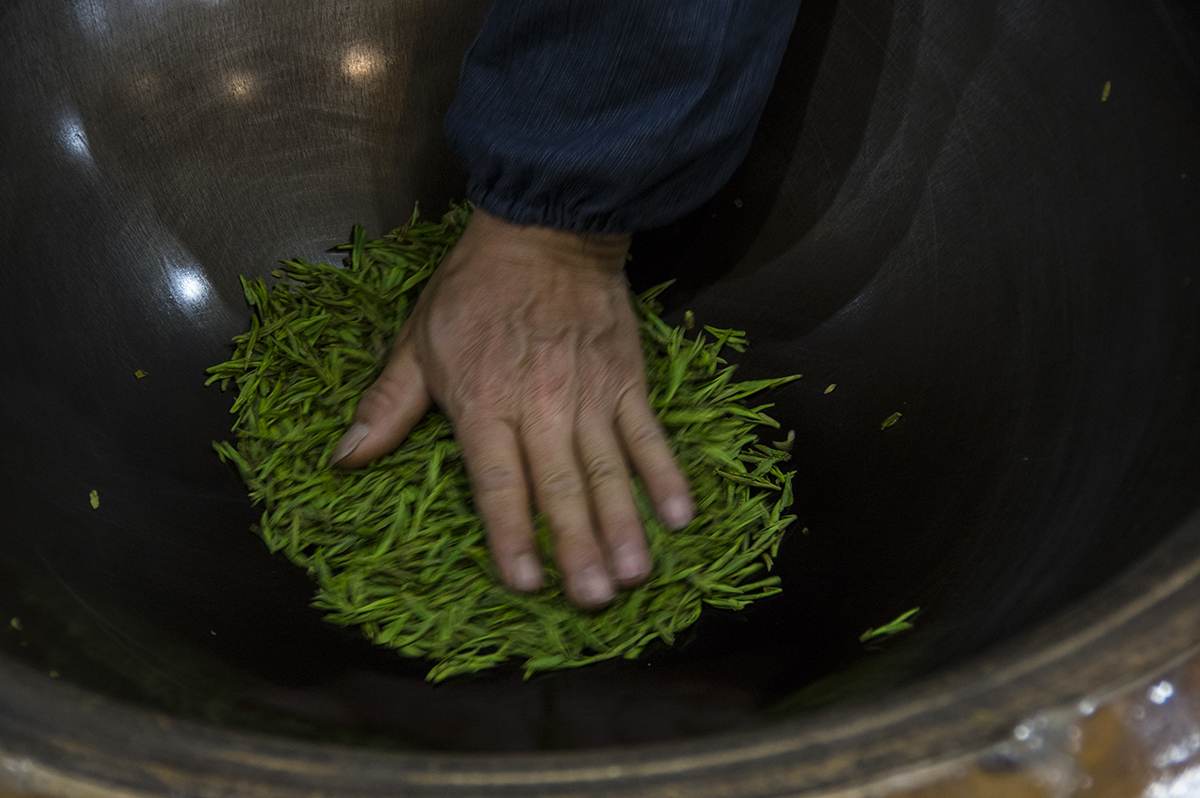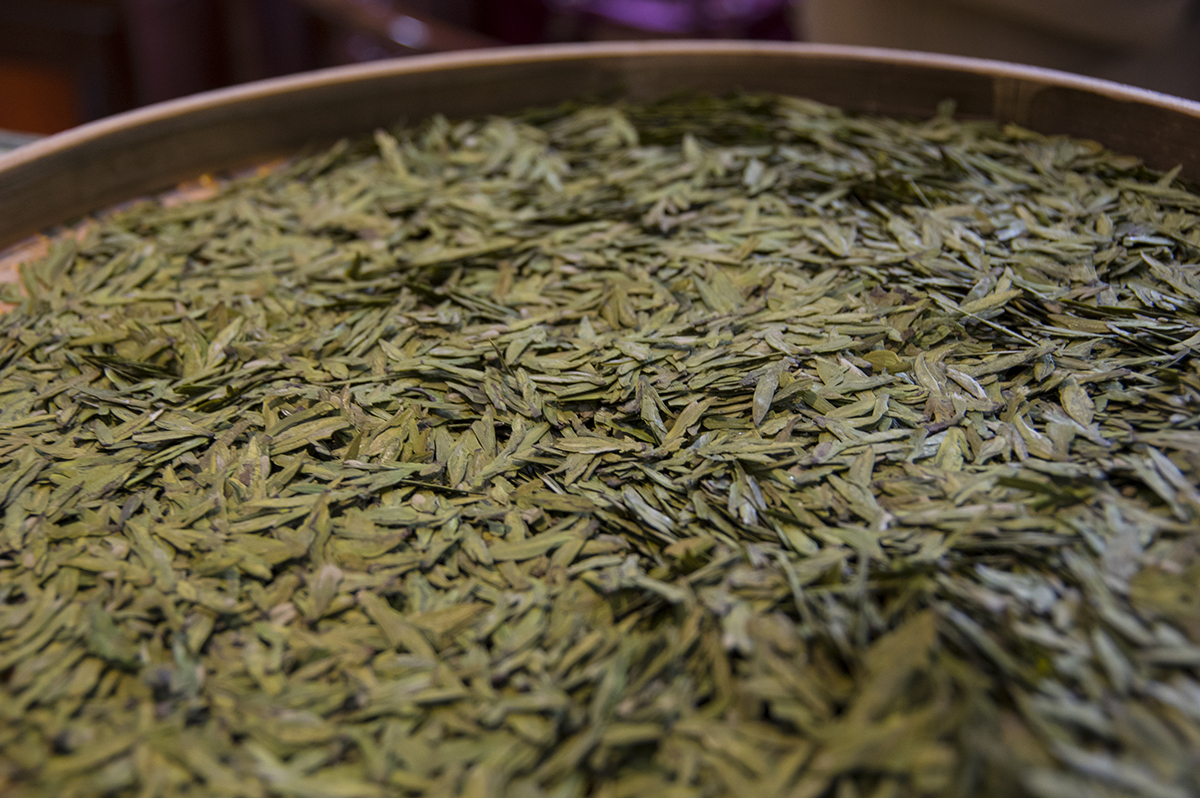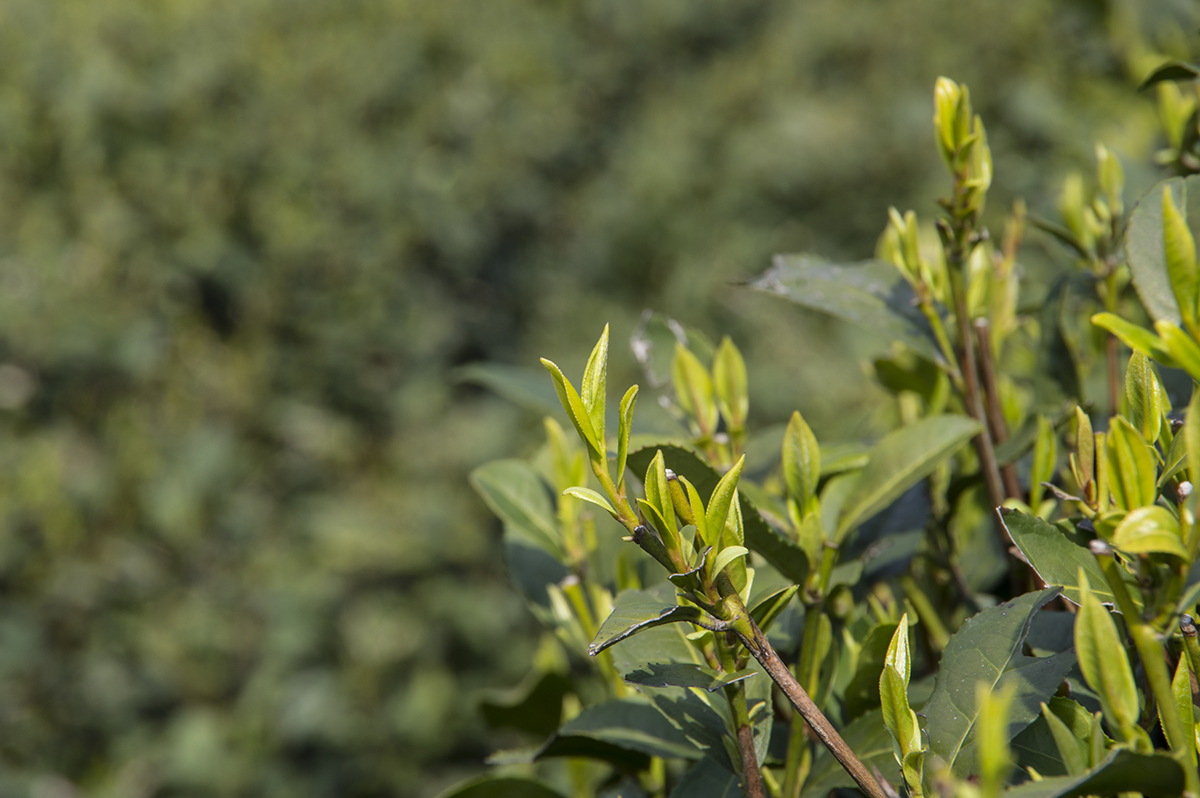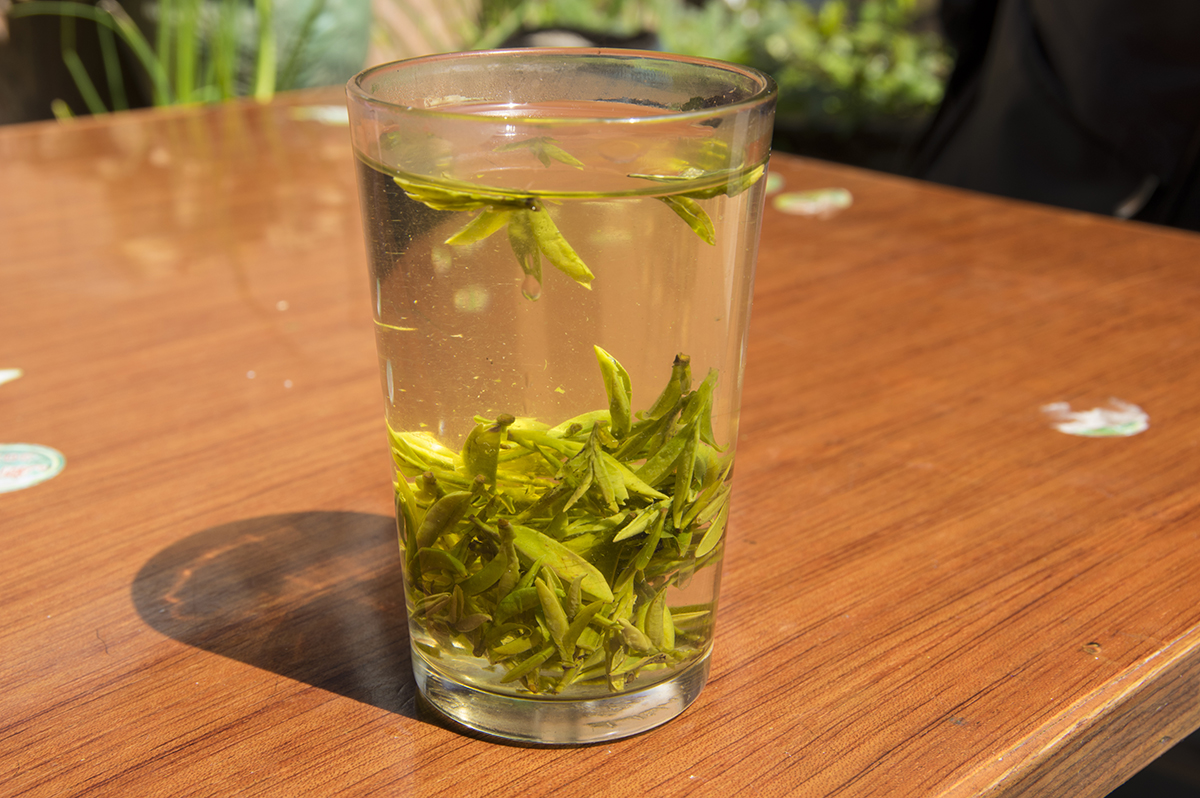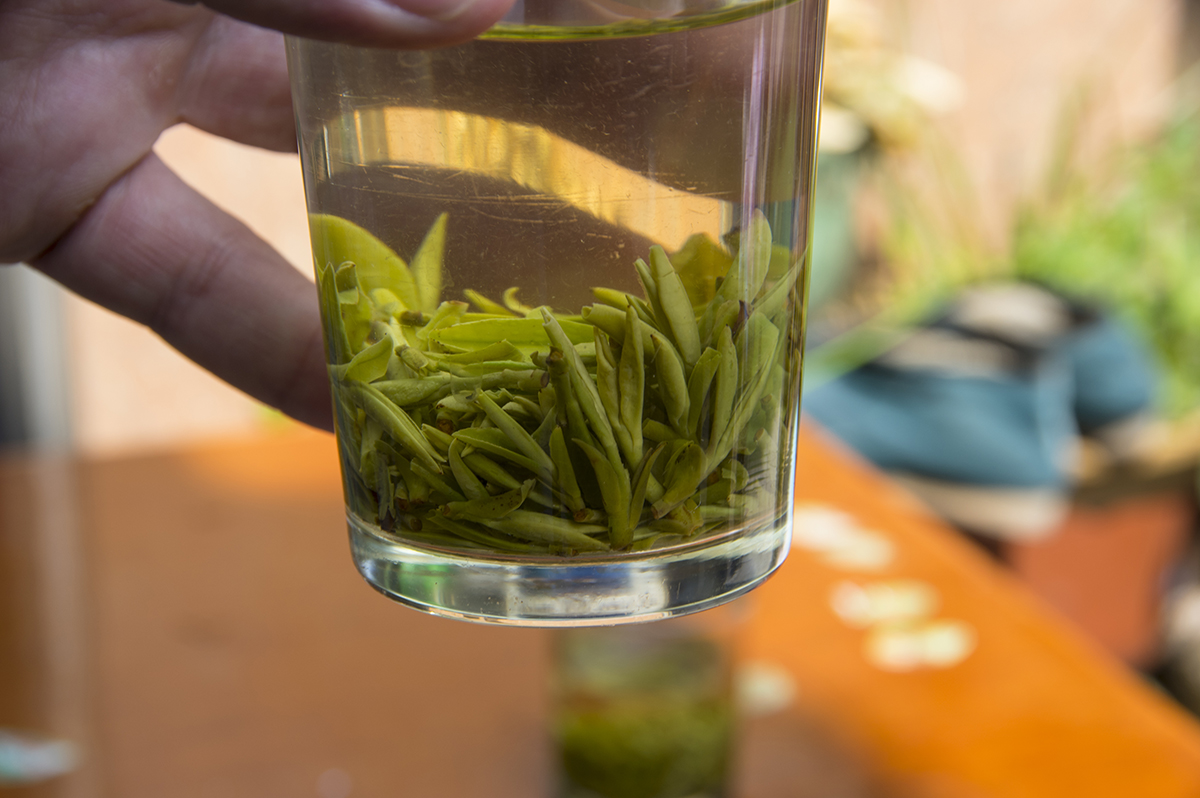Legend about the origin of the name
Due to the fact that Longjing has a very rich history, and the first mention of it was in the eighth century in Lu Yu's book: "Cha Jin", during this time its name has acquired a large number of myths and legends. It is mainly associated with the behavior of tea leaves in water, which in their movement resemble a dragon. The peculiarity of the leaf is that it is able to rotate, twist, as if playing with water.
Another legend says that the name of this tea comes from a mountainous region located in Zhejiang Province. This province is so named from the name of the village of Longjing. In the village, locals happily retell the legend that here, in the well, mineral water has miraculous properties that refract light, so when it rains, optical visual effects appear on the water, resembling the dance of a sacred dragon. The well was considered miraculous and people came to it in drought to ask the dragon for rain.
There is also a legend that during the Ming Dynasty, a drought began in the county where this tea was grown. In order to get water for irrigation, a well was dug in the county and a stone in the shape of a dragon was dug out, after which the tea received its current name Longjing ("Dragon Well").
There are also more mystical stories associated with this name of tea. One of them tells that a certain immortal in the mountains of Hangzhou had a dragon, for which he dug a special well. Before ascending to heaven on this dragon, the immortal left people with knowledge of important healing properties, which were not only stored in the well where the dragon lived, but also participated in the creation of a special tea.
History of Tea
The Dragon Well of Xi Hu Lake has a long history. The earliest mention of the tea can be found in the book of the Tang Dynasty tea expert Lu Yu, the first book on tea in the world. According to this book, Xi Hu Longjing was first planted near two famous temples in Hangzhou: Tianzhu and Lingying. The tea was given the name Dragon Well of Xi Hu Lake during the Song Dynasty, and the name became widespread during the Yuan Dynasty. The fame of the tea increased during the Ming Dynasty. But the tea gained real fame during the Qing Dynasty (1644 - 1912), when Longjing was given the status of Gong Cha (Imperial Tea). The name "imperial" appeared in honor of Emperor Kangxi. And his grandson, visiting the Hu Gong Temple on the slope of Shi Feng Shan (Lion Peak), identified the best bushes. This is how the first 18 imperial bushes appeared, which are now recreated on the West Island.
These bushes still produce tea leaves, and despite their “golden” price, they are sold out before the tea even grows. There is another fact that is the best recommendation for Longjing. For more than a thousand years, it was bought as gifts by Chinese emperors to present to other high-ranking people and rulers. This emphasizes the uniqueness of this variety in the best possible way.
It is quite predictable that such popularity has created conditions for mass counterfeiting and falsification. Today, no more than 30% of real tea is available on the market. And if we talk about imperial longjing, then there is even less - no more than 5%. Often, it does not even go on open sale, as it is bought up by the elite of Chinese society.
Growing areas
True Longjing is linked to the mountain in Hangzhou, to a set of specific minerals in its soil. That is why Longjing from Yunnan, Guizhou, Anhui and fifty other places can never replace Xihu Longjing, or West Lake Longjing. It is a completely different green tea.
The greatest danger, of course, is posed by tea, which is not only grown in the wrong place, but also in which the laws of its preparation are violated, that is, even on the West Lake, tea is not all the same.
There are 18 officially classified areas where this tea is grown. Although it would be more correct to say that it was only relatively recently that the Chinese government decided to protect the production of true Longjing by designating, according to historical data, 18 growing zones of tea that has the right to be called Longjing. This does not mean that Longjing grown in other provinces cannot be considered tea at all. However, it is in these areas that the tea retains four essential qualities: the emerald color of the infusion, the aroma of dew, the sweet taste and the jade appearance of the tea leaf (clear configuration).
Dragon Well grows in the mountainous areas where the climate is mild and there is abundant rainfall all year round. The main places where Longjing is grown by experts are West Lake (Xi Hu), Shifeng Peak, the mountains of Yunxi County, the areas around Meijiawu Village and Hupao County. The tea is harvested at different times, which is what affects its quality.
The highest quality tea is harvested before the Qingming festival, it is called Mingqian. In fact, this is the true imperial tea, which is very difficult to obtain and is very expensive. As a rule, it is bought up in advance. Producers have only a few days to harvest this tea.
Another quality tea is considered to be the one that is harvested before the rainy season. Such tea is called Mingqian and Yuqian.
18 locations where high-quality Longjing tea is grown:
Neighborhood of Xihu
Xiaoshan Zone (萧山区)
Binjiang Zone (滨江区)
Yuhang Zone (余杭区)
Fuyang City (富阳市)
Lin'an City (临安市)
Tonglu County (桐庐县)
Jiande City (Jiande, 建德市)
Chun'an County (淳安县)
Shaoxin County, Shaoxin City (绍兴市绍兴县)
Xinchang County (新昌县)
Shengzhou City (嵊州市)
Zhuji City (诸暨市)
Shangyu City (上虞市)
Yuecheng Zone (越城区)
Pan'an Jinhua County (金华市磐安县)
Dongyang City (东阳市)
Tiantai County, Taizhou City
Production technology
Tea picking begins in early spring, around the beginning of April. Usually at this time the buds and leaves are small and very tender, which is so necessary for obtaining the highest quality. The technique of tea picking has been passed down from one generation to another for centuries, and if you look closely at how pickers collect tea leaves, their actions can be compared to how chickens peck at grains.
The sorted tender raw materials are laid out in a cool room, in a layer of no more than 3-5 cm on bamboo mats (trays) and left for 24 hours. At the same time, due to the insignificant evaporation of moisture, the raw materials retain their original appearance.
However, despite the outwardly barely noticeable changes, during aging, transformations of substances contained in the raw material still occur. These transformations are quite sufficient to obtain tea with specific food flavor and physiological properties during further processing.
The first stage of processing in the preparation of high-grade "longjing" is fixing the raw material after 24 hours of aging. For this purpose, the raw material is roasted in iron hemispherical boilers. The iron boiler is built into a brick oven.
During the roasting process, the tea raw material is poured into a cauldron heated to 100°. The material is vigorously stirred by hand to remove evaporating moisture. At the same time, the leaves produce a crackling sound, reminiscent of the crackling of wood on a fire. After some time, the crackling stops, the flushes (tea buds) become elastic and the green color changes to brown. At the same time, the master changes the movements of his hands, and therefore, the movement of the material also changes.
Instead of stirring, the master strikes the flushes with the open palms of both hands, lifting them up the wall to the edges of the cauldron. Then he releases his hands and the material collects again at the bottom of the cauldron. As a result, the flushes take the form of thin plates.
Roasting duration is 12-15 min. The temperature regime, according to our measurements, was as follows. The initial temperature of the boiler is 105°, after placing the tea leaf in it, the boiler temperature drops to 100°, then to 90°, in the seventh minute of roasting the boiler temperature reaches 70° and at the end of roasting to 67°.
After 12-15 minutes of roasting, the tea is quickly removed from the kettle, spread in a thin layer on bamboo nets and cooled for 30-45 minutes. At the same time, it is sorted, selecting green tea leaves that cannot be processed.
The material remaining on the bamboo nets is again poured into the same boilers for drying at a temperature of 65°. At the same time, it is stirred vigorously. The drying temperature reaches 90°. The drying time is 30-35 minutes. The end of drying is determined by the color of the dry tea, its fragility, and other subjective indicators. After drying, "longjing" is ready for consumption.
When preparing "longjing", the master's work is very hard, since it is necessary to work in conditions of high temperatures. In addition, all operations of turning, mixing, giving the leaf the shape of plates and others are performed by the master manually.
Nowadays, mechanical roasting is increasingly used to produce this tea, but hand-made Long Jing is still of greater value.
Aroma
It has a strong, one might say compressed aroma. Opening up this aroma is the art of handling Longjing. The result should be a clean, subtle, fresh floral aroma, the richness of which is revealed with each new infusion.
Taste
Longjing tea contains a significant concentration of catechins (antibacterial substances that destroy viruses and bacteria and restore natural molecular bonds). It is the process of restoring molecular bonds that creates a persistent sweetish aftertaste (the cell's reaction to restoration).
The taste should be strong and oily, that is, reflect the reaction of the tongue and palate to the tea. The taste of tea varies from herbal and floral to honey-nutty. Much, of course, depends on the brewing temperature. Even a five-degree change can reveal completely different notes (for example, it will increase bitterness). High-quality and properly brewed longjing should leave a sweet aftertaste.
Beneficial properties
Improves thought processes, structures logic, clarifies consciousness, makes the mind clear, precise, and fast.
Research conducted in the UK has established that Longjing surpasses all other green teas in terms of vitamin C and antioxidant content. Its beneficial properties do not end there - Longjing dilates blood vessels and strengthens their walls (vitamin P), reduces cholesterol and destroys fat deposits on the walls, normalizes blood pressure, stimulates digestion and regulates metabolism, strengthens the heart muscle (contains potassium), strengthens tooth enamel and prevents caries (calcium, fluorine, phosphorus), antioxidants protect against free radicals, and is simply very refreshing.
- Comments
- Vkontakte





